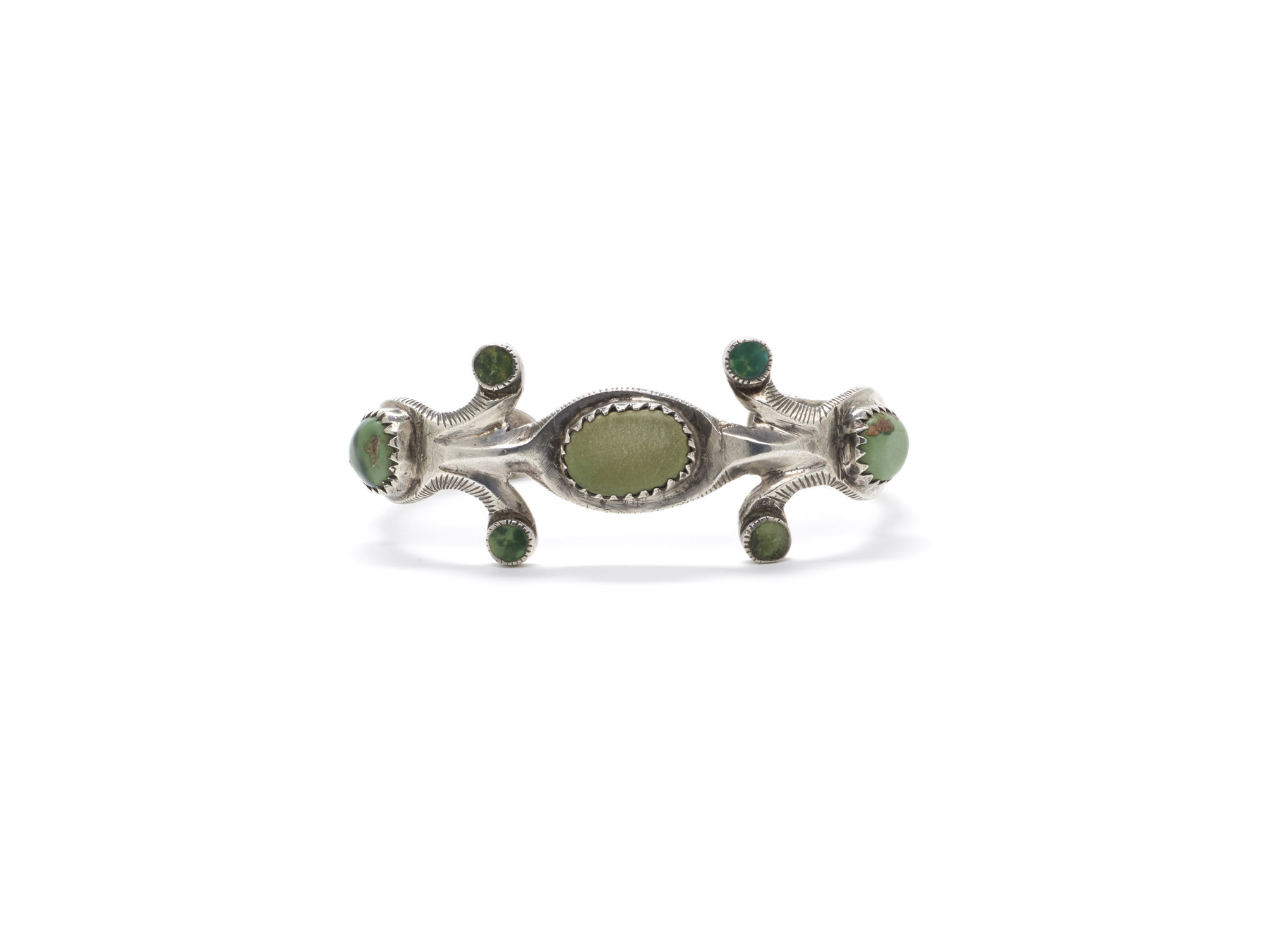Bracelet
(Jewelry)
With the completion of the Santa Fe Railroad at the turn of the 20th century, the American Southwest became a tourist destination. Fred Harvey, a British businessman, recognized the potential of this new market and took the opportunity to open a series of hotels, restaurants, and dining card along the route. Tourism led to a rising interest in American Indian jewelry. This bracelet is typical of pieces sold by the Fred Harvey Company. This inexpensive though elegantly crafted bracelet uses traditional designs but was produced for the fast-growing tourist industry and contains less silver than bracelets the Navajos themselves would have worn.
Provenance
Provenance (from the French provenir, 'to come from/forth') is the chronology of the ownership, custody, or location of a historical object. Learn more about provenance at the Walters.
[Arizona]; Henry Walters, Baltimore, 1916 [mode of acquisition unknown]; Walters Art Museum, 1931, by bequest.
Exhibitions
| 2010 | Bedazzled: 5,000 Years of Jewelry. El Paso Museum of Art, El Paso. |
| 2006-2009 | Bedazzled: 5,000 Years of Jewelry from the Walters Art Museum. Frist Center for the Visual Arts, Nashville; The John and Mable Ringling Museum of Art, Sarasota; The Walters Art Museum, Baltimore. |
Conservation
| Date | Description | Narrative |
|---|---|---|
| 6/8/1979 | Examination | examined for condition |
Geographies
USA (Place of Origin)
Measurements
2 1/16 x 3 1/16 x 1 3/16 in. (5.2 x 7.8 x 3 cm)
Credit Line
Acquired by Henry Walters, 1916
Location in Museum
Not on view
Accession Number
In libraries, galleries, museums, and archives, an accession number is a unique identifier assigned to each object in the collection.
In libraries, galleries, museums, and archives, an accession number is a unique identifier assigned to each object in the collection.
57.998




